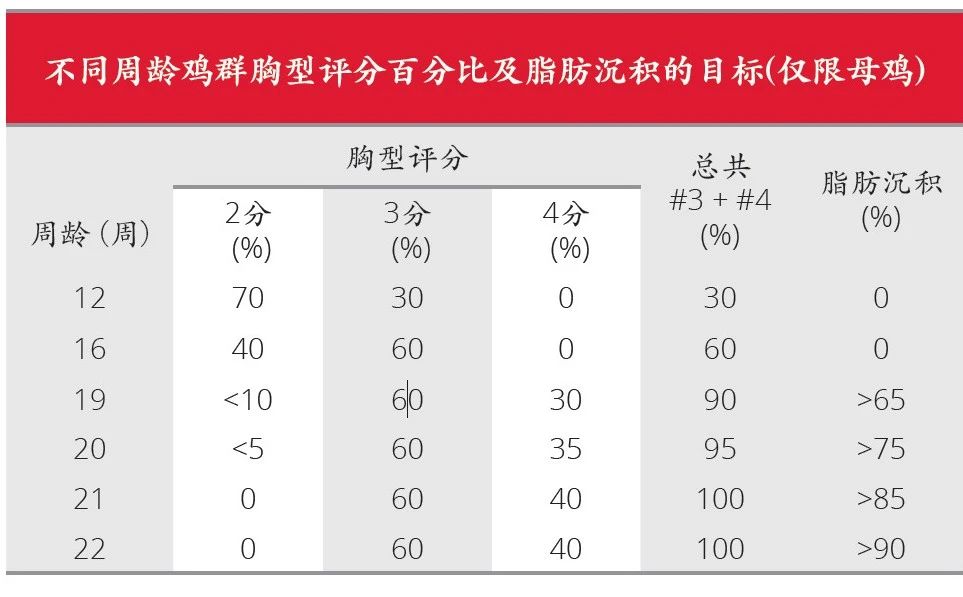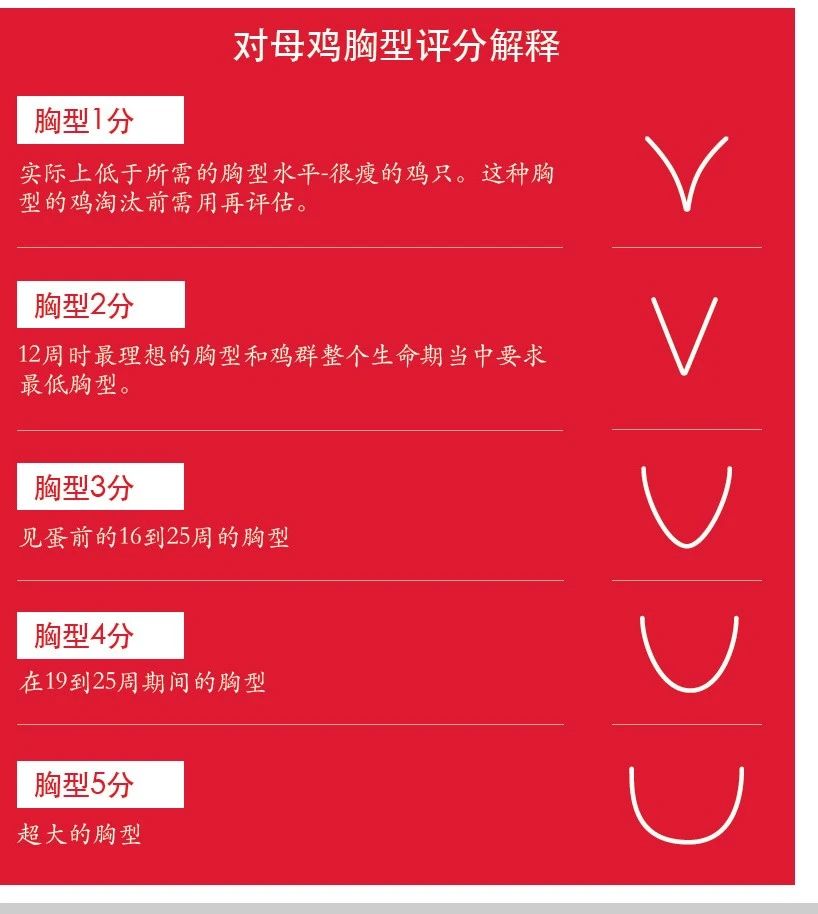Phase 3- Maintenance (8-12 weeks)
During the incubation period (4-8 weeks), the focus of management is to achieve the weight standards and uniformity indicators recommended by Kebao. Continue to focus on weight and uniformity from 8 to 12 weeks, but also maintain even skeletal development.
The increase in weekly feed during the breeding period is 1-3 grams per week for hens. If the weight of the chicken flock is above or below the curve, please manage the weight to bring it back to the standard.
Animal Welfare Tips
To optimize feed digestion, promote chicken health, and reduce the risk of overeating, turning on the lights can help the flock drink water 15 to 30 minutes before the "feeding day". During this period, the breeder can also inspect the chicken flock, pick up dead chickens, assess the need to eliminate chickens, and check whether the environment and equipment in the house are functioning properly. Then, turn off the lights, quickly distribute the fabric in the dark, and then turn on the lights to feed, which helps optimize the even distribution of the chicken flock and feed. Breeders can solve equipment problems before the fabric occurs.
Regardless of the feeding restriction method used, weekly weight gain, physical condition, and uniformity should be evaluated throughout the entire breeding period to optimize the welfare of the breeding flock.
Stage 4- Control Growth (12 to 16 Weeks)
At this stage, the focus shifts from weight to chest shape scoring. By week 12, its skeleton had basically completed 90% and began to grow flesh. At this point, the chest shape score of the chicken flock should increase from 2 points to 3 points. In addition, as the chickens continue to grow, the management requirements for feed levels and water lines increase. Providing the correct material level and drinking water space is crucial at various stages of growth.
The table (below) shows the chest shape standards for hens aged 12 to 22 weeks at different ages. At 12 weeks of age, puberty begins, and as the age increases, hens need to achieve the goal of chest shape score. This table is for reference only, but it highlights the importance of regular chest shape assessment, starting at 12 weeks of age to ensure chest muscle development.


Combining chest shape score with weekly weight. From the table, it can be seen that at 12 weeks of age, the chest shape score for most mothers is 2. The proportion of chickens with a score of 2 continuously decreases throughout the entire flock, and ideally, it should be zero when added to the light.
Achieve early chest shape goals between 12 and 16 weeks and promote pubic or abdominal fat deposition in preparation for enhanced light. If these goals cannot be achieved, it will be difficult to correct the chest shape, body condition, and uniformity of the chicken flock in the future.
At week 12, the decision-making power of material quantity management should gradually shift towards chest shape score rather than weekly weight.
Enabling all caregivers to pay attention to breast shape scores and chicken development helps them make the right decisions regarding feeding, stocking, and transitioning.
At 20 weeks, the physical condition or uniformity has been finalized, and there is no error correction buffer time.
Timely addition of light is as important as the weight of the hen - at this point, the hen must have sufficient fat reserves. Chickens are prone to developing breast shape between 16 and 20 weeks of age. However, fat deposition did not begin at week 16; At 17 weeks of age, chickens begin to accumulate abdominal fat.
Stage 5- Rapid Growth (16-20 Weeks)
At this stage, weight needs to continue to increase. The increase in weight will enable the hen to achieve the required breast shape and sexual maturity synchronization, thus enabling it to unleash its production potential and maintain sustained egg production after the peak.
Although weight gain is important, the chest type score of the breeding chicken is more important during this period. The goal of the rapid growth stage is to ensure the development of breast shape and fat reserves to maintain the high yield required for hens.
Body fat reaches before adding light
Good synchronization of sexual maturity.
High peak egg production and good persistence.
Produce more hatchable eggs in the early stages of the production cycle.
Chickens with good quality and strong vitality.
The mortality rate from onset to peak egg production is relatively low.
Body fat reaches before adding light
Using the recommended criteria requires a 36% increase in hen weight from week 16 (112 days) to week 20 (140 days). In order to achieve a 36% weight gain, the feed must be increased by at least 42% (or 6% higher than the weight gain) under normal circumstances. During this period, do not feed according to weight or use fixed feeding methods.
After 16 weeks, all hens should gradually develop towards breast type # 3, and between 21 weeks, they should be at # 3 and # 4 (see table above).
In some cases, a delay in the physical condition of the hen, with a necessary weight gain of 38-40% (based on chest shape score and fat deposition).
The uniformity of the skeleton, chest shape, pubic fat deposition, and body weight largely determine the uniformity of maturation, peak egg production, and persistence.
Wrong chest shape and fat deposition
Chickens with a chest size of 2 at 20 weeks of age usually do not have deposits of pubic fat or venous fat. Prioritize basic maintenance and growth. Therefore, the sexual maturity of chickens with chest type 2 at 20 weeks of age will be delayed. Although these chickens may mature sexually, they often have poor production performance.






